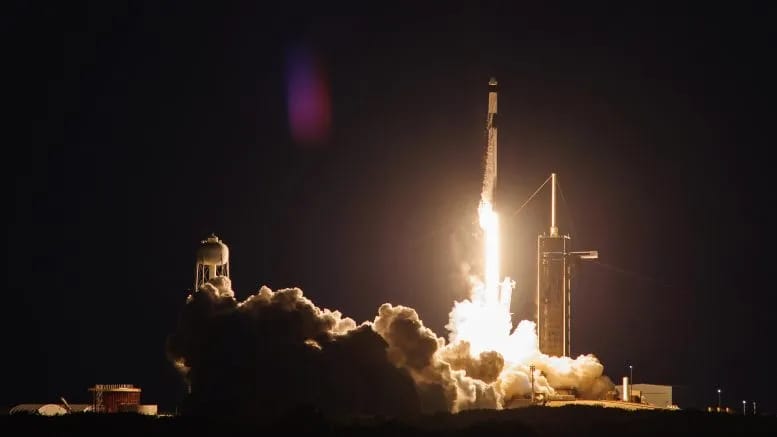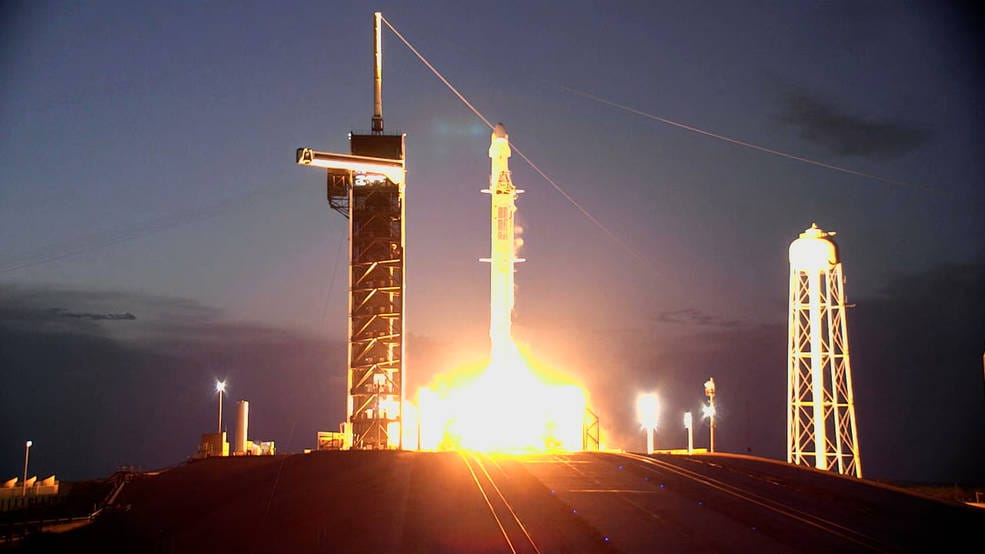After lifting off at 8:44 p.m. EDT on Thursday from NASA’s Kennedy Space Center in Florida, a SpaceX Dragon resupply spacecraft carrying more than 5,800 pounds of science experiments, crew supplies, and other cargo is currently traveling to the International Space Station.
For the company’s 25th commercial resupply services mission for NASA, the spacecraft was launched on a Falcon 9 rocket from Launch Pad 39A at Kennedy.
On Saturday, July 16, it is planned to automatically dock at the space station around 11:20 a.m. and stay there for about a month. On NASA Television, the organization’s website, and the NASA app, coverage of the arrival will start at ten in the morning.

What Is Dust Mapping On Earth?
NASA’s Jet Propulsion Laboratory in Southern California created the Earth Surface Mineral Dust Source Investigation (EMIT), which uses imaging spectroscopy equipment to determine the mineral makeup of dust in arid areas of the planet. Mineral dust can be blown into the atmosphere and travel great distances, affecting the climate, weather, vegetation, and other aspects of Earth.
How Does It Work?
For instance, an area can be warmed by dust made of dark minerals that absorb sunlight, whereas a region might be cooled by dust made of light-colored minerals. Air quality, surface conditions like the speed at which snow melts, and ocean phytoplankton health are all impacted by dust blowing.
For the duration of a year, the inquiry gathers photos in order to create maps of the mineral makeup of the dust-producing locations on Earth. Such mapping might improve our comprehension of how mineral dust affects human populations today and in the future.
What Is Faster Aging Of The Immune System?
Immunosenescence, a term used to describe changes in immune function, is linked to aging. Human immune cells undergo alterations in microgravity that resemble this situation but occur more quickly than Earth’s natural aging process.
Utilizing tissue chips, the Immunosenescence investigation, funded by the U.S. National Laboratory for the International Space Station, examines how microgravity affects immune function while in flight and whether immune cells can recover afterward. Small devices called tissue chips hold human cells in a three-dimensional framework, enabling researchers.
Life In Space
On Earth, intricate colonies of microbes work together to cycle carbon and other nutrients in the soil and support plant growth. The NASA Division of Biological and Physical Sciences-sponsored project Dynamics of Microbiomes in Space investigates how microgravity impacts metabolic interactions in communities of soil microorganisms.
This study focuses on the microbial communities that break down chitin, an organic carbon polymer found naturally on Earth.
As mentioned in a weather study by high school students, a part of the BeaverCube educational mission, high school students will learn aerospace science by creating a CubeSat. One visible and two infrared imagers will be housed aboard BeaverCube to record information on the characteristics of clouds, ocean surface temperatures, and ocean hue.
Why Are Cells Important?
Protein can be produced using cell-free technology without the requirement for specialized machinery or living cells that need to be cultivated. Genes in Space-9, a National Lab-sponsored project, shows how to make protein without cells in microgravity and tests two cell-free biosensors that can identify particular target molecules.
How Can This Technology Help?
This technology may offer an easy-to-use, affordable tool for medical diagnostics, on-demand drug and vaccine manufacture, and environmental monitoring on next space missions.
Biopolymer Research for In-Situ Capabilities examines how microgravity influences the production of a biopolymer soil composite, an alternative to concrete made of organic material and on-site resources like lunar or Martian dust. Utilizing resources local to the site of the construction allows for an increase in number.
